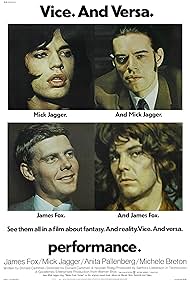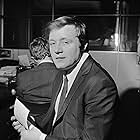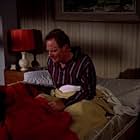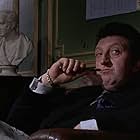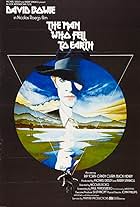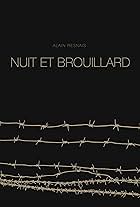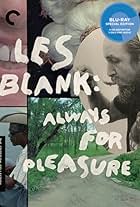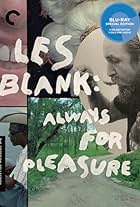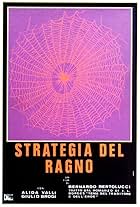IMDb-BEWERTUNG
6,7/10
11.787
IHRE BEWERTUNG
Füge eine Handlung in deiner Sprache hinzuA violent East London gangster undergoes a transformation of identity while hiding from his former colleagues in the home of a jaded Bohemian rock star and his two girlfriends.A violent East London gangster undergoes a transformation of identity while hiding from his former colleagues in the home of a jaded Bohemian rock star and his two girlfriends.A violent East London gangster undergoes a transformation of identity while hiding from his former colleagues in the home of a jaded Bohemian rock star and his two girlfriends.
- Regie
- Drehbuch
- Hauptbesetzung
- Nominiert für 1 BAFTA Award
- 1 Nominierung insgesamt
Michèle Breton
- Lucy
- (as Michele Breton)
Anthony Morton
- Dennis
- (as Antony Morton)
Kenneth Colley
- Tony Farrell
- (as Ken Colley)
Edmond Bennett
- Detective Sergeant
- (Nicht genannt)
Helen Booth
- Noel's mum
- (Nicht genannt)
John Caesar
- Ticket Clerk
- (Nicht genannt)
Jay Denyer
- Constable
- (Nicht genannt)
Empfohlene Bewertungen
Thirty years after its release 'Performance' still remains one of the most controversial movies of the 60s/70s. For many it is an arty pretentious bore that is only worth remembering for being a mother lode of imagery that has been mined extensively by MTV "talents" over the last twenty years. (Cammell/Roeg must be up there with Bunuel and Kenneth Anger as the most plagiarized source for rock video!)
For the rest of us 'Performance' could well be THE great movie of the psychedelic era, rivaled only by Antonioni's 'Blow Up' and Jodorowky's 'El Topo'. 'Performance' merges the hard boiled Cockney gangster world of the Kray twins (exemplified by James Fox's brutal Chas) with the freaks of the rock/drug world (Jagger's enigmatic Turner) and shows they have as much in common as they differ. Reality and fantasy blur, gender and personas get confused, and Chas and Turner become increasingly hard to tell apart.
All of this unfolds to an ultra-cool soundtrack of The Last Poets, Randy Newman, Jagger's lost classic 'Memo From Turner' and former Spector/Stones/Crazy Horse collaborator Jack Nietsche's Moog. Add to this plenty of sex, trips and Jorge Luis Borges references, and you've got yourself a mind-blowing movie experience!! Highly recommended to Grant Morrison fans.
For the rest of us 'Performance' could well be THE great movie of the psychedelic era, rivaled only by Antonioni's 'Blow Up' and Jodorowky's 'El Topo'. 'Performance' merges the hard boiled Cockney gangster world of the Kray twins (exemplified by James Fox's brutal Chas) with the freaks of the rock/drug world (Jagger's enigmatic Turner) and shows they have as much in common as they differ. Reality and fantasy blur, gender and personas get confused, and Chas and Turner become increasingly hard to tell apart.
All of this unfolds to an ultra-cool soundtrack of The Last Poets, Randy Newman, Jagger's lost classic 'Memo From Turner' and former Spector/Stones/Crazy Horse collaborator Jack Nietsche's Moog. Add to this plenty of sex, trips and Jorge Luis Borges references, and you've got yourself a mind-blowing movie experience!! Highly recommended to Grant Morrison fans.
Gangland enforcer James Fox gets involved with decadent fading rock star Mick Jagger in Nicholas Roeg's and Donald Cammell's cult film
Few films encapsulate drug-crazed Swinging 60s London like this one, though it was only seen three years after it was made and then heavily-edited because Warners were shocked at what they had financed. The film exceeded the boundaries of good taste that always epitomized British cinema.
This superbly shot, deeply disturbing, complex, often pretentious, often brilliant parable of confused identity was the first feature directed by leading cinematographer Roeg, sharing the credit with artist Cammell.
An eerily plausible Fox, cast against type, plays Chas, a sadistic gangster on the run who rents a room in the Notting Hill Gate home of Turner (Jagger), a reclusive, sexually ambiguous, washed-up rock star. Fox, his antithesis, is offered women and magic mushrooms before literally swapping personalities with the singer.
Fox abandoned the cinema for almost a decade after this film, such was its effect on him.
Verdict A dazzling, ideas-rich, extraordinarily inventive full-stop to the 60s
Few films encapsulate drug-crazed Swinging 60s London like this one, though it was only seen three years after it was made and then heavily-edited because Warners were shocked at what they had financed. The film exceeded the boundaries of good taste that always epitomized British cinema.
This superbly shot, deeply disturbing, complex, often pretentious, often brilliant parable of confused identity was the first feature directed by leading cinematographer Roeg, sharing the credit with artist Cammell.
An eerily plausible Fox, cast against type, plays Chas, a sadistic gangster on the run who rents a room in the Notting Hill Gate home of Turner (Jagger), a reclusive, sexually ambiguous, washed-up rock star. Fox, his antithesis, is offered women and magic mushrooms before literally swapping personalities with the singer.
Fox abandoned the cinema for almost a decade after this film, such was its effect on him.
Verdict A dazzling, ideas-rich, extraordinarily inventive full-stop to the 60s
As the title might suggest, Performance (1970) is a film to be experienced, as opposed to simply endured. At its most basic level, the film can be seen as an experiment into the nature of personality, role-playing, character and the lines between fact and fiction, reality and fantasy; all blurred together by a heady cocktail of sex, drugs and rock n' roll that is representative of the late 60's art-scene that writer and co-director Donald Cammell was very much a part of. For many it will have no doubt become something of a dated relic; a film from the days when East End gangsters were all sharp-suited mother's boys or closeted homosexuals with Jags' and boxing clubs or 60's radicals with beards in bed-sits dropped acid and strummed endless drones about the doors of perception on electric guitars. Others will see it for what it truly is; a disorientating hall of mirrors of psychology and satire - part Borges, part Carroll - as Mick Jagger's self-destructive rock star becomes a sort of white rabbit figure; leading exiled gangster James Fox into a wonderland of psychological manipulation, mind-games and more.
On a secondary level of content and presentation, Performance can also be seen as a playful subversion of the codes and conventions of early gangster cinema; extending on certain well-worn characteristics of 40's film-noir - with the idea of a disgraced hood forced to hide-out after a botched job gives way to the threat of mob retaliation - whilst creating a continually evocative underworld environment that is rife with a number of recognisable references to the iconic gangland milieu of London's East End. This particular period setting is later contrasted and eventually broken down by the second half of the film, in which a combination of bohemian squalor and 60's decadence erode the carefully created facade that these troubled and enigmatic characters - "performers" even - have exploited in order to progress within their disparate social environments. The lines are further blurred by the use of drugs, which again, parallel the emotional landscapes of Lewis Carroll, as well as the more potent ideas of sex and sexuality, which are here presented as being part of a greater performance in itself.
The film is littered with presentations of sex - both heterosexual and homosexual - and always loaded with the threat of both physical and psychological violence, power and manipulation. The sex is a continual distortion; neither erotic, nor titillating, and seemingly inspired by the paintings of Francis Bacon or Domenico di Michelino. It works in the creation of a heightened atmosphere that becomes continually more oppressive and dangerously claustrophobic as the film develops; with the kaleidoscope of images, sounds and colours all blending and blurring between extended philosophical discussions, violence and transfiguration. From here the film shows the subtle symbiosis between the self-aware rock-star and the naive gangster, as sex and drugs are again combined to break down the boundaries of personality and the literal mirroring between life and death. There are all kinds of different ways that we, as an audience, can interpret these ideas and the relationship between the characters; as Cammell - here in close-collaboration with co-director and cinematographer Nicholas Roeg - creates a continually fascinating atmosphere that is punctuated by abstract thought and dark, surrealist imagery.
As a work of artistic expression and cinematic experimentation Performance is a film that needs to be experienced. It is not only notable as a deep, penetrating expose into the human psyche and the dangerous places that narcissism and self-delusion can carry us when the walls of reality have slowly broken down, but as a time capsule to the creative spirit of the 1960's and a brief bohemian subculture that I for one find incredibly interesting. The film also manages to capture the raw energy and quiet sexuality of Jagger before he became an insufferable cliché (all gyrating, geriatric hips swinging to a packed-out football stadium as he saunters through possibly the 100,000,000th performance of Gimme Shelter), with the seductive energy and shaman-like otherworldliness instead creating a character that is self-aware and clearly self-referential, and yet - so perfectly matched against the brooding uncertainty of Fox's wayward gangster. Likewise, the art-pop, drug culture and obvious psychedelic influences never overwhelm the story; instead feeling absolutely germane to the scene that Cammell and Roeg were attempting to explore and to the themes expressed within the subtle subtext of Cammell's strange and suggestive script.
In hindsight, Performance can be seen as the point in time at which the psychedelic experimentation, expression and drug-culture of the 1960's was allowed to envelope the cinematic medium; extending on the more exciting and progressive films that had been emerging from places like France, Japan or the Czech Republic throughout the years leading up to 1967, and finally creating a complete symbiosis between content, theme, character and presentation that was socially progressive and entirely relevant. If America had films like Easy Rider (1969), Medium Cool (1969) and Zabriskie Point (1970), then we had Performance and 'If...' (1968). And if the latter remains a truly defining masterpiece of British film-making and a testament to the unsung greatness of director Lindsay Anderson, then Performance is the essence of the scene preserved as a sort of cinematic reflection; where the underground met the mainstream and the experience was allowed to take control.
On a secondary level of content and presentation, Performance can also be seen as a playful subversion of the codes and conventions of early gangster cinema; extending on certain well-worn characteristics of 40's film-noir - with the idea of a disgraced hood forced to hide-out after a botched job gives way to the threat of mob retaliation - whilst creating a continually evocative underworld environment that is rife with a number of recognisable references to the iconic gangland milieu of London's East End. This particular period setting is later contrasted and eventually broken down by the second half of the film, in which a combination of bohemian squalor and 60's decadence erode the carefully created facade that these troubled and enigmatic characters - "performers" even - have exploited in order to progress within their disparate social environments. The lines are further blurred by the use of drugs, which again, parallel the emotional landscapes of Lewis Carroll, as well as the more potent ideas of sex and sexuality, which are here presented as being part of a greater performance in itself.
The film is littered with presentations of sex - both heterosexual and homosexual - and always loaded with the threat of both physical and psychological violence, power and manipulation. The sex is a continual distortion; neither erotic, nor titillating, and seemingly inspired by the paintings of Francis Bacon or Domenico di Michelino. It works in the creation of a heightened atmosphere that becomes continually more oppressive and dangerously claustrophobic as the film develops; with the kaleidoscope of images, sounds and colours all blending and blurring between extended philosophical discussions, violence and transfiguration. From here the film shows the subtle symbiosis between the self-aware rock-star and the naive gangster, as sex and drugs are again combined to break down the boundaries of personality and the literal mirroring between life and death. There are all kinds of different ways that we, as an audience, can interpret these ideas and the relationship between the characters; as Cammell - here in close-collaboration with co-director and cinematographer Nicholas Roeg - creates a continually fascinating atmosphere that is punctuated by abstract thought and dark, surrealist imagery.
As a work of artistic expression and cinematic experimentation Performance is a film that needs to be experienced. It is not only notable as a deep, penetrating expose into the human psyche and the dangerous places that narcissism and self-delusion can carry us when the walls of reality have slowly broken down, but as a time capsule to the creative spirit of the 1960's and a brief bohemian subculture that I for one find incredibly interesting. The film also manages to capture the raw energy and quiet sexuality of Jagger before he became an insufferable cliché (all gyrating, geriatric hips swinging to a packed-out football stadium as he saunters through possibly the 100,000,000th performance of Gimme Shelter), with the seductive energy and shaman-like otherworldliness instead creating a character that is self-aware and clearly self-referential, and yet - so perfectly matched against the brooding uncertainty of Fox's wayward gangster. Likewise, the art-pop, drug culture and obvious psychedelic influences never overwhelm the story; instead feeling absolutely germane to the scene that Cammell and Roeg were attempting to explore and to the themes expressed within the subtle subtext of Cammell's strange and suggestive script.
In hindsight, Performance can be seen as the point in time at which the psychedelic experimentation, expression and drug-culture of the 1960's was allowed to envelope the cinematic medium; extending on the more exciting and progressive films that had been emerging from places like France, Japan or the Czech Republic throughout the years leading up to 1967, and finally creating a complete symbiosis between content, theme, character and presentation that was socially progressive and entirely relevant. If America had films like Easy Rider (1969), Medium Cool (1969) and Zabriskie Point (1970), then we had Performance and 'If...' (1968). And if the latter remains a truly defining masterpiece of British film-making and a testament to the unsung greatness of director Lindsay Anderson, then Performance is the essence of the scene preserved as a sort of cinematic reflection; where the underground met the mainstream and the experience was allowed to take control.
Here is a movie that cannot be classified in any subcategory. Many viewers of now and then seemed to be disturbed by its lack of evident meaning or message. Starting more or less like a gangster flick, it abruptly turns halfway through into a psychedelic trip, where Mick Jagger appears, in one of his rare screen roles, as a retired rock star.
No doubt, "Performance" doesn't do much effort to be easily understood. If you like stories with a clear plot, well defined characters and a happy ending, then skip this one. In order to enjoy that movie, you should better give up your rationality for a while. There are many interpretations one can have about it, but they will most likely come in the second run. Like a dream, "Performance" is a visual and mental shock where nothing comes as expected, and it lets you wake up dazed and confused by its so peculiar atmosphere.
What I find most puzzling about it is how far ahead of its time this movie was in every aspect. It was shot in 1968, but released only two years later because the distributors were obviously not prepared for this kind of "performance", and had not seen anything alike before. Western society was undergoing incredibly fast and drastic mutations, and the culture shock that happened in those days is at the very heart of the picture. It was "time for a change". Just like the main character, the western world would never be the same again afterwards.
Interesting fact : a mere five years before, the lead actor James Fox had played in "the Servant", a film based on a play by Harold Pinter with a story that has a lot in common with "Performance". "The Servant" appeared highly controversial by then because of its allusions to seedy sex, but it was shot in black and white with very conventional filming, editing and acting, and a very outdated jazzy soundtrack. Hard to believe it takes place in the same city (London) with the same lead actor within just a five year gap.
Nothing about "Performance" is conventional. It takes off immediately into a hectic pace, flashy colors, haunting music, and very graphic sex and violence. The London crime world is photographed with a rare accuracy. Actually, one of the guys playing the gangsters happened to be a real life gangster. Then suddenly, by a random twist of fate, the cockney villain (no heroes here) is propelled into another completely different underground scene, where "nothing is true, everything is permitted". He meets his alter ego as a has-been pop musician living secluded in a red-walled mansion covered with mirrors, together with a duet of intriguing women. Hallucinogenic mushrooms are casually served at breakfast, notions of time and space fade away, while gender, identity and truth get blurred. The two main characters gradually merge together and though both of them seemingly get doomed by their fate in the end, you don't know by then which of them is whom anymore.
I don't know of any other movie where you see a Rolls Royce burning down in an acid bath, gangsters performing a strip-tease show, or a plunging view inside a skull as a bullet is shot through it, least all of them together. Besides, the recurring use of mirrors all throughout the picture, the constant play with colors and the superimposing of faces and images don't have many parallels either in film history.
Of course, if you are a Rolling Stones fan, this movie is a must-see, but then you probably have seen it already. Like the main character, the Rolling Stones began as English street kids, and came to explore a world of sex, drugs and rock&roll where one of them actually lost his life. In "Performance" , an androgynous long-haired Mick Jagger with pouting lips is at the acme of his character, while blond and foxy Anita Pallenberg, who had affairs with three members of the band, and freckled boyish Michèle Breton fit perfectly into the scenery .
If there was to be a "pop-art" movie, that would be it. You may love or hate this film, but for sure, it is daringly creative and experimental, and anything but ordinary. To quote the character played by Jagger : "the only performance that makes it, that really makes it, is the one that achieves madness".
No doubt, "Performance" doesn't do much effort to be easily understood. If you like stories with a clear plot, well defined characters and a happy ending, then skip this one. In order to enjoy that movie, you should better give up your rationality for a while. There are many interpretations one can have about it, but they will most likely come in the second run. Like a dream, "Performance" is a visual and mental shock where nothing comes as expected, and it lets you wake up dazed and confused by its so peculiar atmosphere.
What I find most puzzling about it is how far ahead of its time this movie was in every aspect. It was shot in 1968, but released only two years later because the distributors were obviously not prepared for this kind of "performance", and had not seen anything alike before. Western society was undergoing incredibly fast and drastic mutations, and the culture shock that happened in those days is at the very heart of the picture. It was "time for a change". Just like the main character, the western world would never be the same again afterwards.
Interesting fact : a mere five years before, the lead actor James Fox had played in "the Servant", a film based on a play by Harold Pinter with a story that has a lot in common with "Performance". "The Servant" appeared highly controversial by then because of its allusions to seedy sex, but it was shot in black and white with very conventional filming, editing and acting, and a very outdated jazzy soundtrack. Hard to believe it takes place in the same city (London) with the same lead actor within just a five year gap.
Nothing about "Performance" is conventional. It takes off immediately into a hectic pace, flashy colors, haunting music, and very graphic sex and violence. The London crime world is photographed with a rare accuracy. Actually, one of the guys playing the gangsters happened to be a real life gangster. Then suddenly, by a random twist of fate, the cockney villain (no heroes here) is propelled into another completely different underground scene, where "nothing is true, everything is permitted". He meets his alter ego as a has-been pop musician living secluded in a red-walled mansion covered with mirrors, together with a duet of intriguing women. Hallucinogenic mushrooms are casually served at breakfast, notions of time and space fade away, while gender, identity and truth get blurred. The two main characters gradually merge together and though both of them seemingly get doomed by their fate in the end, you don't know by then which of them is whom anymore.
I don't know of any other movie where you see a Rolls Royce burning down in an acid bath, gangsters performing a strip-tease show, or a plunging view inside a skull as a bullet is shot through it, least all of them together. Besides, the recurring use of mirrors all throughout the picture, the constant play with colors and the superimposing of faces and images don't have many parallels either in film history.
Of course, if you are a Rolling Stones fan, this movie is a must-see, but then you probably have seen it already. Like the main character, the Rolling Stones began as English street kids, and came to explore a world of sex, drugs and rock&roll where one of them actually lost his life. In "Performance" , an androgynous long-haired Mick Jagger with pouting lips is at the acme of his character, while blond and foxy Anita Pallenberg, who had affairs with three members of the band, and freckled boyish Michèle Breton fit perfectly into the scenery .
If there was to be a "pop-art" movie, that would be it. You may love or hate this film, but for sure, it is daringly creative and experimental, and anything but ordinary. To quote the character played by Jagger : "the only performance that makes it, that really makes it, is the one that achieves madness".
I missed this film when it came out over thirty years ago, and have looked out for it ever since. At last, after a rare showing on BBC's arts channel, it has proved to be well worth the long wait.
It is a complex film, starting and finishing as a gripping and violent gangster movie, with the more philosophical and erotic section with Jagger and Pallenberg slotted between the gangster elements. James Fox as gangster on the run is a revelation. Why didn't he get parts like this again? He is far more convincing than his contemporary Michael Caine in this kind of role, with a scary viciousness combined with his 'Jack the Lad' charm.
Although Mick Jagger and Anita Pallenberg don't seem to be playing anything more than themselves, they are perfect foils for Fox. As they embroil Fox in their weird games, the writers/directors Nicholas Roeg and Donald Cammell create brilliantly the mushroom-based trip that they take him on and through. The film also evokes a fascinating and nostalgic picture of late '60s London and is a reminder that the "swinging sixties" had their grimy and violent side. Overall, a great film that deserves far wider recognition.
It is a complex film, starting and finishing as a gripping and violent gangster movie, with the more philosophical and erotic section with Jagger and Pallenberg slotted between the gangster elements. James Fox as gangster on the run is a revelation. Why didn't he get parts like this again? He is far more convincing than his contemporary Michael Caine in this kind of role, with a scary viciousness combined with his 'Jack the Lad' charm.
Although Mick Jagger and Anita Pallenberg don't seem to be playing anything more than themselves, they are perfect foils for Fox. As they embroil Fox in their weird games, the writers/directors Nicholas Roeg and Donald Cammell create brilliantly the mushroom-based trip that they take him on and through. The film also evokes a fascinating and nostalgic picture of late '60s London and is a reminder that the "swinging sixties" had their grimy and violent side. Overall, a great film that deserves far wider recognition.
Wusstest du schon
- WissenswertesAccording to Anita Pallenberg, one scene actually shows her shooting heroin, which she was just starting to get into at the time.
- Alternative VersionenIn most versions the voices of Johnny Shannon, John Bindon and Laraine Wickens have been overdubbed. This was because the actors' own voices were thought to be "too cockney" for non-UK audiences to understand. The 2007 Region 2 DVD (DY11687) features the voices of all three actors throughout the feature, none of the previous overdubs are present in this version.
- VerbindungenFeatured in Memo from Turner (1970)
Top-Auswahl
Melde dich zum Bewerten an und greife auf die Watchlist für personalisierte Empfehlungen zu.
- How long is Performance?Powered by Alexa
Details
- Erscheinungsdatum
- Herkunftsland
- Sprache
- Auch bekannt als
- The Performers
- Drehorte
- Produktionsfirma
- Weitere beteiligte Unternehmen bei IMDbPro anzeigen
Box Office
- Budget
- 750.000 £ (geschätzt)
- Laufzeit1 Stunde 45 Minuten
- Farbe
- Sound-Mix
- Seitenverhältnis
- 1.85 : 1
Zu dieser Seite beitragen
Bearbeitung vorschlagen oder fehlenden Inhalt hinzufügen

